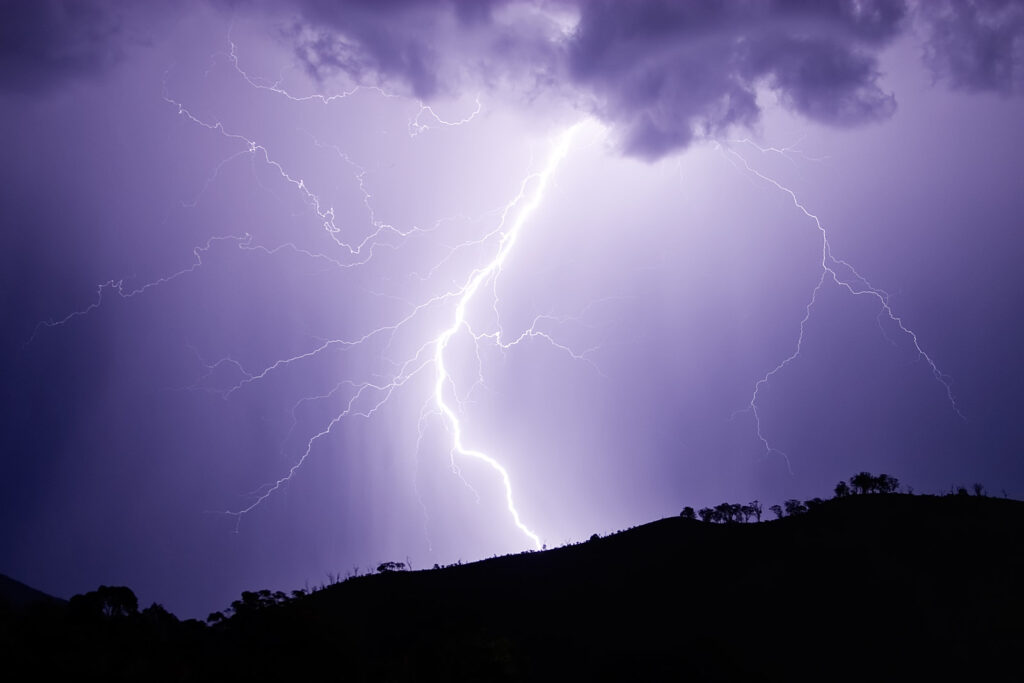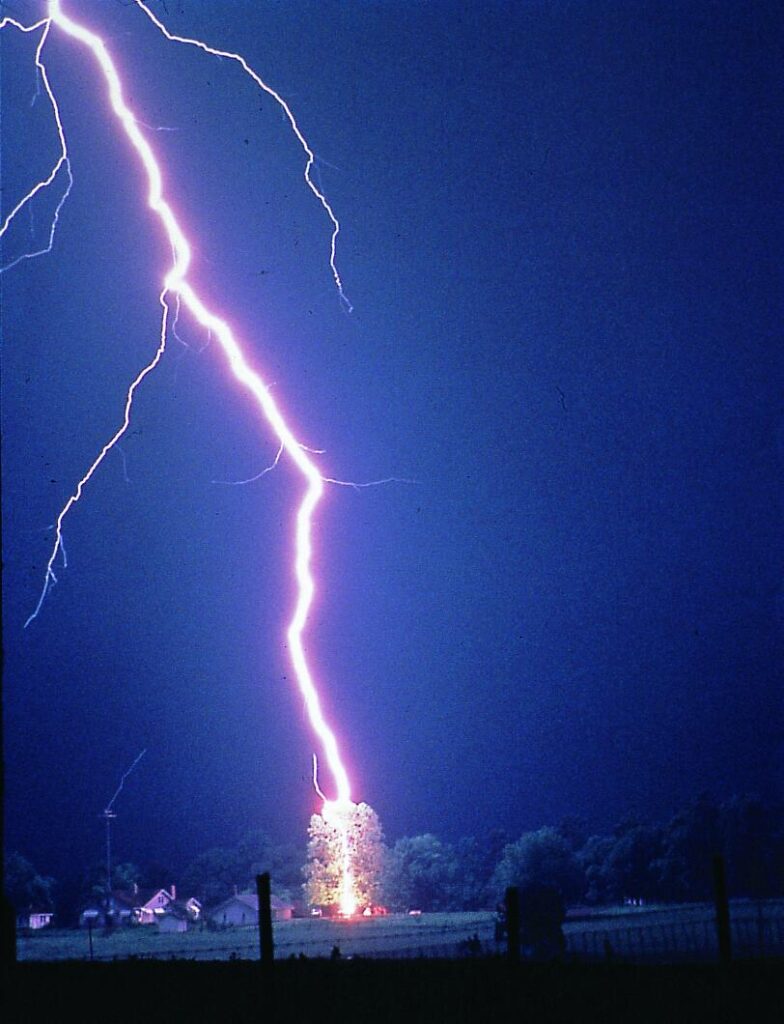Text by Henrylito D. Tacio
Photos from Wikipedia
Lightning, a natural phenomenon, occurs naturally in many parts of the country especially during a rain. The cause of so much fear (particularly among children), awe, and wonder, lightning has been responsible for the death of many and the destruction of homes and other buildings.
The chances of getting hit by lightning are one in 600,000, but in recent years, people have died and more have been hurt in separate lightning strike incidents in different parts of the country.
It happened at Camp Madigger in barangay Binaton in Digos City last Easter Sunday. Six teenagers were having fun at the picturesque view of camp when heavy rains suddenly poured.
In order not to get wet, they took shelter in a makeshift hut which was near a tall tree. All of a sudden, lightning struck the area. Three women and one man died instantly. Another man died as he was brought to the hospital. The lone survivor was slightly injured.
Some years back, six men were given their second lives after they survived a lightning strike. According to one of the survivors, they decided to harvest shells on the nearby shore in barangay Coronon in Sta. Cruz, Davao del Sur after the tide ebbed around 8:30 p.m.
But there was a sudden downpour of rain followed by strong winds so they decided to seek shelter under the coconut trees. A lightning struck a tree beside where they stood and some of the victims were electrocuted. Some of the victims fainted and sustained wounds all over the body.

All the victims were thrown in different directions due to the explosion. “We were thrown three meters away,” a survivor was quoted as saying. “The explosion was so strong that it felt like it was a bomb.”
“About 2,000 people are killed worldwide by lightning each year,” reports the National Geographic. “Hundreds more survive strikes but suffer from a variety of lasting symptoms, including memory loss, dizziness, weakness, numbness, and other life-altering ailments.”
Meteorologists claim there are more lightnings that occur during summer than during the rainy season. On land, lightning is more frequent at dusk than at dawn. On water, the reverse is true.
Actually, lightning is a massive electrostatic discharge between electrically charged regions within clouds, or between a cloud and the Earth’s surface. The charged regions within the atmosphere temporarily equalize themselves through a lightning flash, commonly referred to as a strike if it hits an object on the ground.
Experts say the electricity a lightning generates can power a 100-watt bulb for three months. Lightning can heat up the air around it to up to 30,000 degrees Celsius.
Lightning occurs approximately 40–50 times a second worldwide, resulting in nearly 1.4 billion flashes per year, according to John E. Oliver in an article which appeared in Encyclopedia of World Climatology.
In a seminar workshop held in Davao City some years back, senior weather specialist Niño A. Relos of the Philippine Atmospheric, Geophysical and Astronomical Services Administration (PAGASA), said that lightnings are classified into three types: forked lightning, sheeting lightning, and ball lightning.
Forked lightning is a common form of lightning, in a cloud-to-ground discharge, which exhibits downward-directed branches from the main lightning channel. Sheeting lightning appears merely as a general illumination over a broad area, usually because the path of the flash is obscured by clouds.
Ball lightning is a rare form of lightning, consisting of a bright, luminous ball that moves rapidly along objects or floats in the air. A classic example is Saint Elmo’s fire, which Filipinos call santelmo.
The expression “Lightning never strikes twice (in the same place)” is similar to “Opportunity never knocks twice” in the vein of a “once in a lifetime” opportunity, that is, something that is generally considered improbable. But lightning occurs frequently and more so in specific areas.
In the book, Beyond Coincidence: Amazing Stories of Coincidence and the Mystery and Mathematics Behind Them, authors Martin Plimmer and Brian King related the story of a British calvary officer.
In the last year of World War I, he was knocked off his horse by a flash of lightning. He was paralyzed from the waist down as a result. He moved to Vancouver, Canada where, six years later, while fishing in a river, lightning struck him again, paralyzing his right side.
Two years later, he was sufficiently recovered to take walks in a local park when lightning sought him out again, this time permanently paralyzing him. He died soon after. Four years later, lightning hit his gravestone.
“You can protect yourself and your loved ones if you know what to do when you hear thunder as a warning,” the US Centers for Disease Control and Prevention (CDC) states in its website. “The risk of being struck by lightning is low, but the consequences of lightning strike injuries are serious.”
· If you are caught outdoors when lightning is close by, the CDC suggests the following:
· If the weather forecast calls for thunderstorms, postpone your trip or activity.
· Remember: When thunder roars, go indoors. Find a safe, enclosed shelter. Safe shelters include homes, offices, shopping centers, and hard-top vehicles with the windows rolled up.
· If you are caught in an open area, act quickly to find adequate shelter. The most important action is to remove yourself from danger. Crouching or getting low to the ground can reduce your chances of being struck but does not remove you from danger.
· If you are caught outside with no safe shelter nearby, the following actions may reduce your risk: Immediately get off elevated areas such as hills, mountain ridges, or peaks. Never lie flat on the ground. Crouch down in a ball-like position with your head tucked and hands over your ears so that you are down low with minimal contact with the ground.
· Never shelter under an isolated tree. Never use a cliff or rocky overhang for shelter. Immediately get out of and away from ponds, lakes, and other bodies of water. Stay away from objects that conduct electricity (such as barbed wire fences, power lines, or windmills).
· If you are in a group during a thunderstorm, separate from each other. This will reduce the number of injuries if lightning strikes the ground.
· If you are out in the open water and a storm rolls in, return to shore immediately.
· Avoid open vehicles such as convertibles, motorcycles, and golf carts.
· Avoid open structures such as porches, gazebos, baseball dugouts, and sports arenas. These structures won’t protect you from lightning.
· Stay away from open spaces such as golf courses, parks, playgrounds, ponds, lakes, swimming pools, and beaches. Seek shelter immediately.
· Stay away from tall structures, such as telephone poles and trees; lightning tends to strike the tallest object around.
Being indoors does not automatically protect you from lightning. In fact, about one-third of lightning-strike injuries occur indoors. Here are some tips to keep safe and reduce your risk of being struck by lightning while indoors.
· Avoid contact with water during a thunderstorm. Do not bathe, shower, wash dishes, or have any other contact with water during a thunderstorm. Lightning can travel through plumbing.
· Avoid using electronic equipment of all types. Do not use anything connected to an electrical outlet, such as computers, laptops, game systems, washers, dryers, or stoves. Lightning can travel through electrical systems and radio and television reception systems.
· Avoid using corded phones. Corded phones are not safe to use during a thunderstorm. However, cordless or cellular phones are safe to use during a storm.
· Do not lie on concrete floors or lean on concrete walls during a thunderstorm. Lightning can travel through any metal wires or bars in concrete walls or flooring.
“Lightning strikes may be rare, but they still happen, and the risk of serious injury or death is severe,” the CDC reminds. “Take thunderstorms seriously. Learn and follow the above safety rules to keep yourself safe from lightning.”


